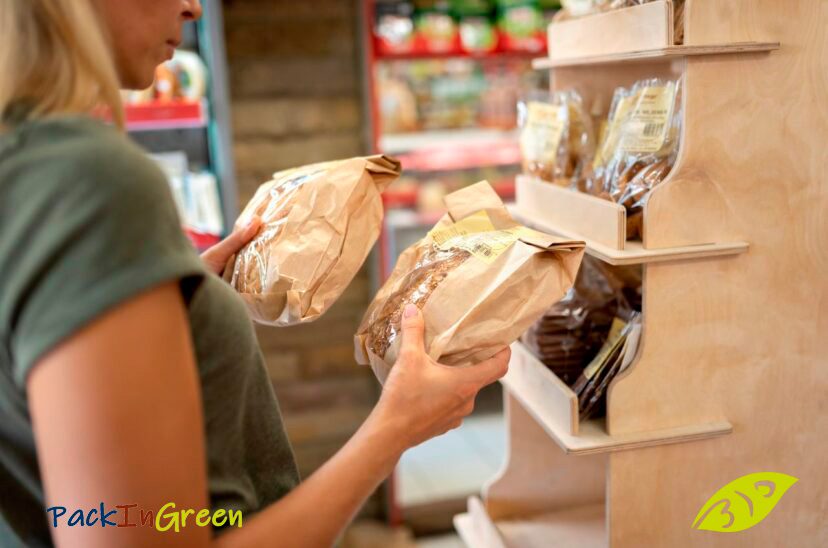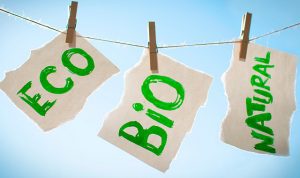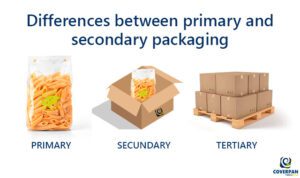Today, environmental concerns among consumers are on the rise, highlighting the growing importance of sustainable packaging in the fight against climate change.
The lack of accessible information and the complexity of the sustainable packaging industry are key barriers. Limited media education and the presence of misinformation confuse consumers about the benefits of sustainable packaging.
In this post we will address all the relevant information you didn’t know about until now.
Would you pay more for sustainable packaging?
In a recent study carried out by Pro Carton and published in the industry magazine Infopack, it is mentioned how important environmental awareness has become for consumers in recent years.
Consumers attach particular importance to the use of sustainable packaging as a key action to mitigate the impact of climate change. To this end, they are increasingly opting for sustainable packaging even if it means paying a little more.
Lack of consumer awareness about sustainable packaging
Lack of knowledge about sustainable packaging among consumers is one of the main problems in capitalising on their environmental awareness.
Firstly, education about sustainability and its benefits is often limited or inaccessible in the media and educational programmes. This leaves many consumers without a clear understanding of why sustainable packaging is important.
In addition, the complexity of the sustainable packaging industry with the use of different types of materials and processes can be technical and difficult for the average consumer to understand, making decision-making difficult.
Also, misinformation and greenwashing confuse consumers. Some products may be presented as more sustainable than they really are, leading to a lack of confidence in environmental claims.
The lack of clear and universal labelling standards also makes it difficult for consumers to identify which products are really more environmentally friendly. These challenges highlight the need for education, transparency and clear standards to encourage consumer adoption of sustainable packaging.
How to identify Biodegradable and Compostable packaging?
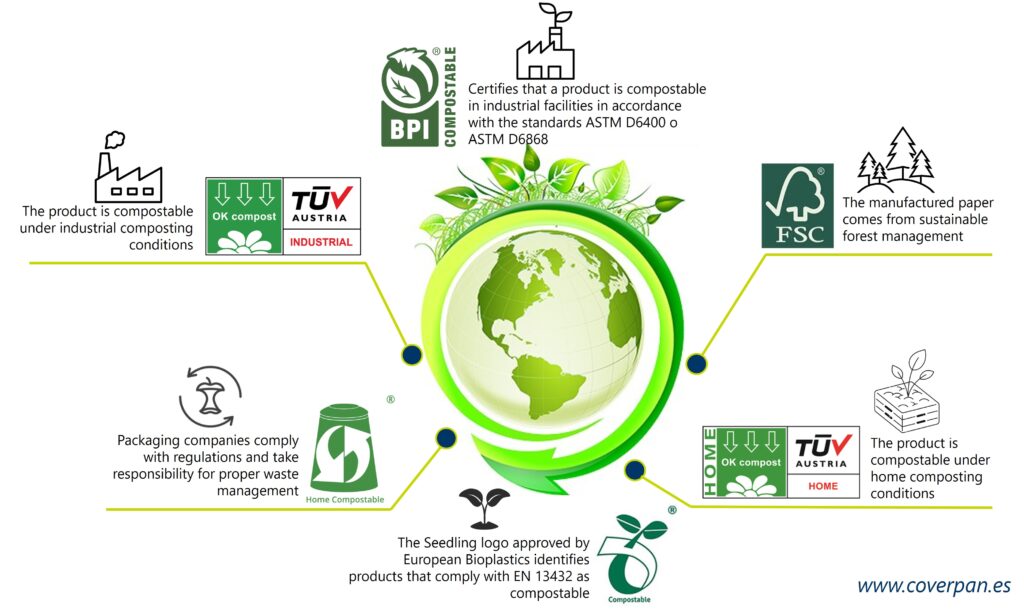
Knowing whether packaging is biodegradable or compostable is fundamental to making conscious purchasing decisions. The guidelines to identify if a packaging is truly sustainable are:
1. Look for Certifications and Labels: some of the most common certifications include the “OK Compost” or “Seedling” logo issued by entities such as TÜV Austria, the “USDA Certified Biobased Product” logo, and the “EN 13432” logo for compostable packaging in Europe. In addition, some labels may clearly indicate that the packaging is biodegradable or compostable.
Our PACKINGREEN sustainable packaging carries recognised certifications that guarantee its biodegradability or compostability such as FSC and PEFC certificates, and all our raw materials are certified by our suppliers.
2. Research the Materials Used: Our biodegradable and compostable packaging is made from renewable organic materials such as corn starch, paper fibres, sugar cane bagasse, PLA or cellophane, among others.
3. Consult the Waste Management Instructions: At COVERPAN we provide clear instructions on how to dispose of them correctly. If the packaging is biodegradable, it is indicated that it can be disposed of in the organic bin or composted in a home or industrial composting system.
Compostable packaging may require specific temperature and humidity conditions to decompose completely, so it is important to follow the instructions provided.
4. Examine the Decomposition Time: Under normal conditions, biodegradable and compostable packaging is inert and does not degrade spontaneously. To initiate a composting process would require a combination of conditions.
The guarantee period we recommend to our customers is 6 months under proper storage conditions. If you want to know what these conditions are, we invite you to read our post “What is the expiry date of a biodegradable and compostable packaging“.
5. Research Local Recycling Policies: It is important to keep in mind that biodegradability and compostability may vary depending on the waste management infrastructure in your area. Some communities may have composting facilities adequate to process compostable packaging, while others may not have the capacity to do so. Make sure you know your local recycling and composting policies to determine the best way to dispose of your packaging responsibly.
By following these guidelines, you will be able to more easily identify whether a package is biodegradable or compostable, allowing you to make more sustainable and responsible purchasing decisions.
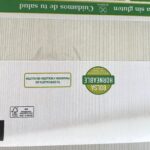
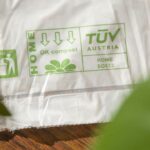
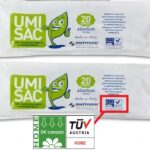
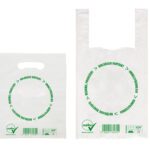
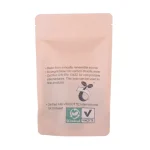
Why invest in sustainable packaging?
Our purchasing decisions have a significant impact on the health of our planet. That’s why we suggest choosing sustainable packaging, even though it may come at a slightly higher price. It is a valuable investment that benefits both the consumer and the environment.
Criteria to take into account in your choice:
1. Environmental Responsibility: Opting for sustainable packaging is a direct way to contribute to the preservation of the environment. By choosing biodegradable or compostable materials instead of conventional plastics, you are reducing the amount of plastic waste that ends up in landfills and natural ecosystems. This choice reflects your commitment to environmental responsibility and the conservation of natural resources for future generations.
2. Quality and Durability: Although the price of sustainable packaging may be slightly higher compared to cheap plastic, its quality and durability are often superior. Sustainable packaging is designed to withstand repeated use and maintain the integrity of the product it contains for longer. This means that, in the long run, your investment translates into a product that is not only environmentally friendly, but also more reliable and durable.
3. Brand Image and Perceived Value: For many companies, choosing sustainable packaging is not only a matter of environmental responsibility, but also an opportunity to enhance their brand image and differentiate themselves in the marketplace. Consumers increasingly value companies that adopt sustainable practices and are willing to pay a premium price for products that reflect these values. By opting for sustainable packaging, you are demonstrating your commitment to sustainability and strengthening your brand perception among environmentally conscious consumers.
4. Long-term Cost Reduction: Although the cost of sustainable packaging may initially be higher, in the long term it can result in significant savings. Investing in quality materials and sustainable manufacturing processes can lead to reduced operational and waste management costs in the long term. In addition, companies can benefit from tax and marketing incentives associated with sustainable practices, offsetting the higher initial cost.
Choosing sustainable packaging is not only an environmentally responsible decision, but also a strategic investment that offers tangible short and long-term benefits. From improved brand image to reduced operating costs, sustainable packaging offers value beyond the purely economic aspect.
Investing in sustainable packaging is not only a conscious purchase, but a strategic decision that benefits the health of the planet and offers long-term advantages for consumers and businesses.

